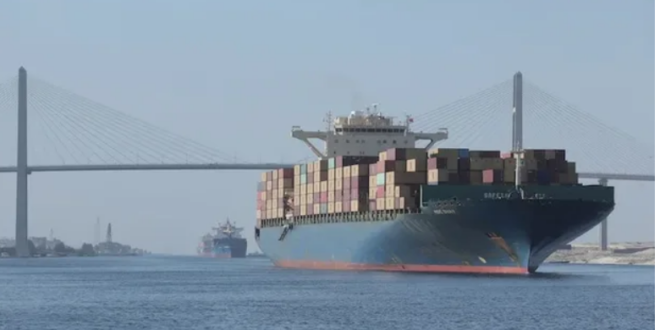Muhamad Yehia
Egyptian prime minister Mostafa Madbouly has said the Suez Canal is reporting losses of up to $550 million per month due to ongoing regional tensions.
In January Suez Canal Authority chairman Osama Rabie said dollar revenues from the Suez Canal were down 40 percent since the start of the year after attacks forced global shippers to opt for longer but safer routes.
While no breakdown was given on the canal’s revenue contribution, the Suez Canal Economic Zone’s revenue hit EGP8.5 billion in 2023-24, surging 205 percent from EGP2.8 billion in 2016-2017, Egypt Daily News reported, quoting SCZone chairman Walid Gamal El-Din’s meeting with Madbouly.
Chinese investments in the economic zone have reached nearly $3 billion through 155 industrial, logistical and service companies.
The economic zone has also signed 29 memorandums of understanding with various international companies specialising in green hydrogen, which could draw investments worth $133 billion.
- Egypt to float Suez Canal subsidiary next year
This month Danish shipping major Maersk CEO Vincent Clerc said disruption in the Red Sea is expected to stretch into the third quarter of 2024, making the situation challenging for carriers and businesses.
In May Maersk said that the Red Sea disruption had resulted in a 15 to 20 percent industry-wide capacity loss on the Asia to North Europe and Mediterranean routes in the second quarter of 2024.
- Revenues down 64% from 2023
- Number of ships falls by 54%
- Saudi ports report fall in traffic
Suez Canal revenues continued to decline in May because of instability in the Red Sea, according to Egyptian media.
Revenues fell 64.3 percent year on year to $337.8 million. Last month 1,111 individual ships passed through the canal – down 54 percent on the May 2023 figure of 2,396.
Finance minister Mohamed Maait said last month that revenues could fall by up to 60 percent as a result of the disturbances to global shipping.
During the first four months of the year, Red Sea shipping fell by almost half compared to the same period last year.
In May, the average number of ships that passed through the Suez Canal per day was 22, compared to 24 in April and 51 in May 2023.
Yemen’s Ansar Allah group, widely referred to as Houthis, began attacking ships in the Red Sea last November, saying their actions were a response to the conflict in Gaza.
The impact of their attacks has been felt across the region. The Saudi Ports Authority reported on Sunday that maritime traffic fell to 986 ships in May, an 8 percent year-on-year decrease.
The kingdom reported a 10 percent year-on-year decrease in handled containers to 647,839 twenty-foot equivalent units (TEUs). The number of passengers fell by around a third.
Instability across the region has also pushed the Egyptian government to revise down its tourism targets for 2024 from 18 million to between 15.5 million and 16.5 million tourists.
Air cargo between Middle East and Europe up by 30%
Red Sea disruption to hit capacity by 20% says Maersk
Opinion: Spare a thought for the non-Gulf economies
A record 14.9 million tourists visited Egypt last year, just shy of its 15 million target. In the first four months of 2024, 5 million tourists entered Egypt, the second-highest figure on record for that period.
Tourism minister Ahmed Issa told Sky News Arabia last month that the sector is “growing at an unprecedented rate” despite the war in Gaza. His ministry is pursuing a large-scale investment programme to improve tourism infrastructure, he said.
Issa expects 25,000 new hotel rooms to open across the country in the next 12 months. The total number of rooms is forecast to more than double by 2028, from 200,000 at present to 420,000.
 موقع وجه أفريقيا موقع وجه أفريقيا هو موقع مهتم بمتابعة التطورات في القارة الأفريقية
موقع وجه أفريقيا موقع وجه أفريقيا هو موقع مهتم بمتابعة التطورات في القارة الأفريقية



